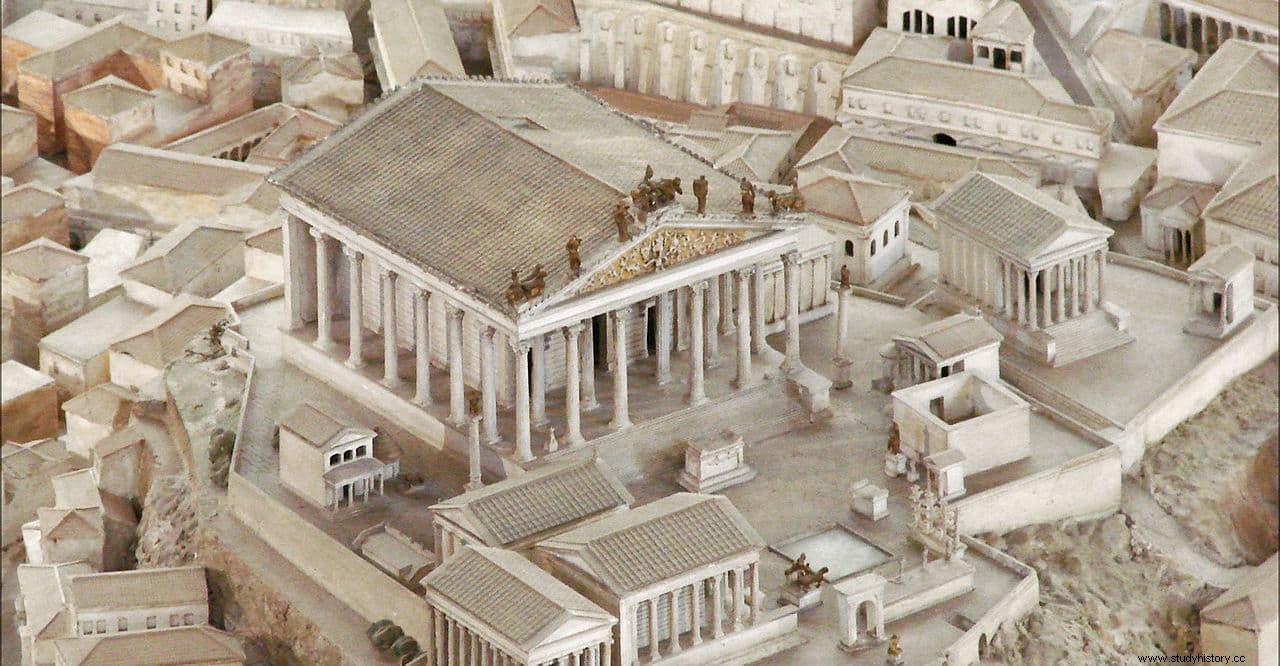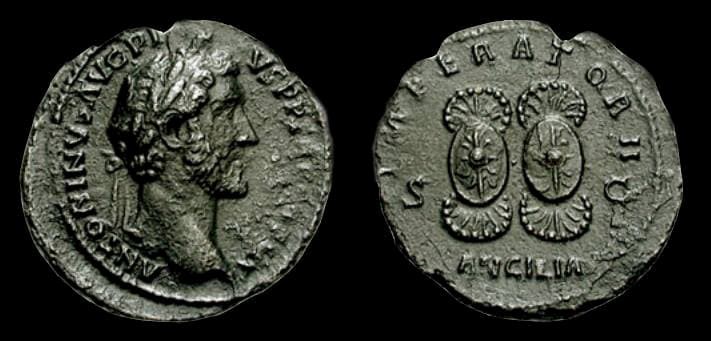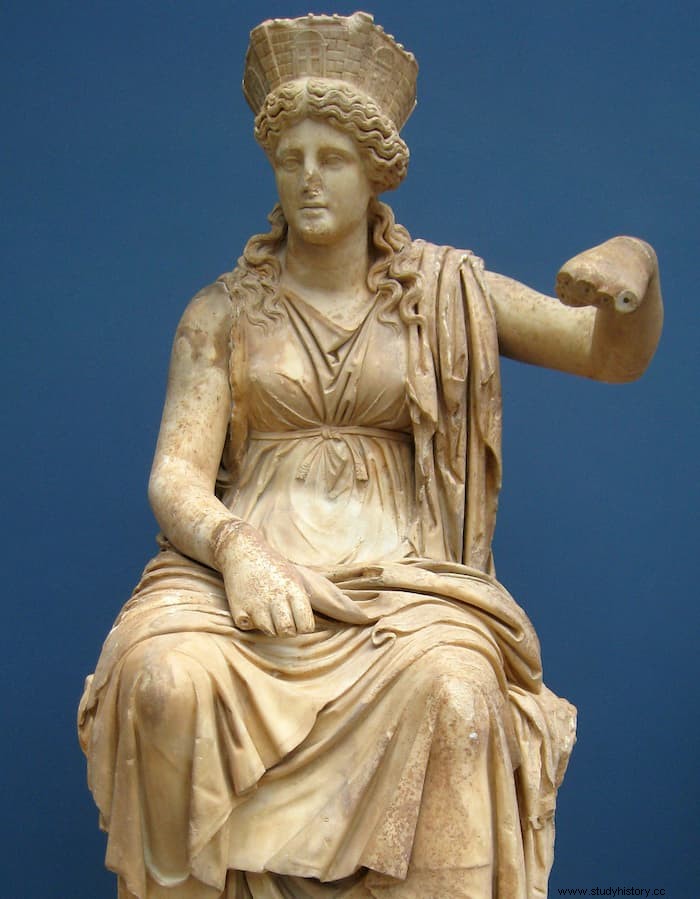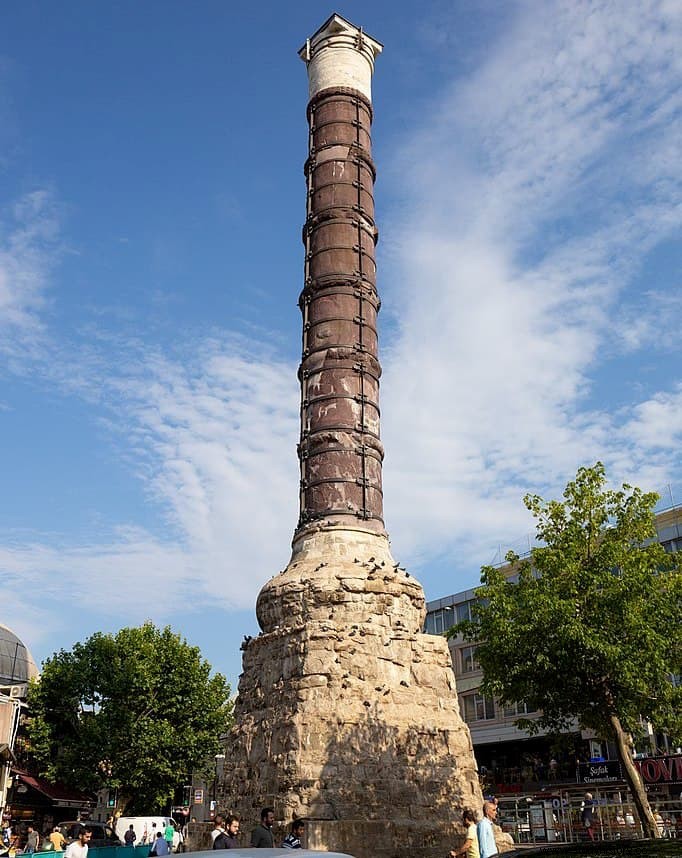Pignora imperii is a latin term that can be translated as something like domain objects . The Romans believed that these objects possessed a kind of power that, together, guaranteed Rome's dominance over the rest of the world's peoples, and its continuity.
The sources mention a variable number of these objects, although it is generally considered that the most correct list it is the one of 7 objects given by Mauro Servio Honorato at the end of the 4th century in his commentary on Virgil In tria Virgilii Opera Expositio .

To these seven some authors add the sacred fire of Vesta, which should never go out and was maintained by the vestals. The flame was the only representation of the goddess, and its extinction was a disastrous omen for the city. About her and how Theodosius closed the temple around 394 AD. putting out the sacred fire, we talk in our story about Celia Concordia, the last vestal of Rome.
Curiously, of the 7 objects there are three that are completely fictitious and that are not mentioned in any other source as pignora imperii :the ashes of Orestes, the scepter of Priam and the veil of Iliona. There are abundant references to the other four objects in Roman literature, but unfortunately they were lost and there is no evidence of them in the archaeological record.
Alan Cameron believes that the list could have been invented by Marco Terencio Varrón, who is known to have been fascinated by the number 7 . But at the same time, seven was an important number in Rome, since it designated the number of hills on which it had been founded, the number of kings it had had, and even the number of witnesses necessary for certain legal acts.

In any case, it is clear that, although all the objects come from the first moments of the city's existence, or even belong to its founding myths, they were not collected at the same time.
A first group of three objects would have been brought to Rome by the Trojans who accompanied Aeneas in fleeing from him, and have a clear Trojan origin. A second group has different origins:Greece, Sabina, Etruria. And the last one, the stone of Cibeles or Mother of the Gods, was introduced by the Senate in historical times, a political decision that had to fulfill a prophecy of the Sibylline Books.
Priam's scepter
After the fall of the city before the Greeks, the royal scepter would have been rescued from the flames and brought to Lazio by Ilioneus on behalf of Aeneas, as a symbol of peace and a guarantee of alliance. If it existed, which is certainly doubtful, it could have been kept on the Palatine.
Iliona's Veil
Iliona, the eldest daughter of Priam and Hecuba, was the wife of the Thracian king Polymestor, the protagonist of a story of betrayals and disagreements with the Trojans. The veil in question was woven from acanthus and had been a gift from Leda to Helena on the occasion of her wedding. Since Iliona was already dead, she would arrive with the Trojan refugees anyway.
The Palladium
The third of the objects of Trojan origin was a wooden statue three cubits high (meter and a half). It depicted either the goddess Athena or Pallas, her childhood playmate whom she killed in an accident, with a spear in her right hand and a spinning wheel and spindle in her left. Q>
The Palladium was in Troy from the time of its foundation, when it was found by Ilio while he was building the city. Troy was said to be impregnable as long as the Palladium was in it, so during the war it was stolen by Diomedes and Odysseus. However, another version of the story says that what was taken was a copy, and the original would end up arriving in Italy again with Aeneas. Even Pausanias affirms the latter.
The Romans believed that the Palladium was kept in the temple of Vesta, where King Numa Pompilius had placed it. No one could see it and only the Vestal Maxima knew it was the original.
The ashes of Orestes
Orestes was the son of Agamemnon and Clytemnestra, who would have killed the latter and her lover Aegisthus, as responsible for the death of Agamemnon on his return from Troy. Orestes himself, who died from a snake bite in Arcadia, would be buried in Sparta.
But another version of the story says that his sister Iphigenia cremated him and buried his ashes in the forest of Aricia, near Rome, where they were found centuries later. They were supposedly kept in the Temple of Capitoline Jupiter.
Ancilia or sacred shields

They were 12 oval bronze shields with notches on both sides that were kept in the Temple of Mars by the Salian priests.
Legend has it that one of them had been made by Mars himself and fallen from the sky or given to King Numa Pompilius, on the condition that as long as he remained in Rome, Rome would rule the world. A story so similar to that of the Trojan Palladium that Numa did not want to risk it and ordered 11 copies of the shield, in case someone thought of stealing it.
The copies, made by the blacksmith Veterio Mamurio, were so good that no one could ever distinguish them from the original. The 12 shields were taken out in procession each year during the month of March, when the Salian priests paraded for three days with them hanging, beating them in imitation of the work done by Mamurius.
The terracotta chariot of Veii
When the last king of Rome, Tarquin the Proud, built the temple of Capitoline Jupiter at the end of the 6th century BC, he commissioned Vulca, the most famous of the Etruscan sculptors from the city of Veii, to create a terracotta chariot representing the chariot of Jupiter.
Legend has it that while it was being baked in the kiln, the sculpture swelled so much that it had to be destroyed before it could be removed, which was considered an omen of prosperity. The quadriga was located at the top of the pediment of the Capitoline Jupiter temple, as an acrotera.
In the year 296 B.C. it was replaced by a bronze copy, at the expense of the Ogulnios brothers.
The black stone of Cibeles, the Mother of the gods

In the year 205 B.C. the Romans looked to the Sibylline Books for some indication of how to emerge victorious in the Second Punic War. The answer was that they should go to the Anatolian city of Pesinunte and obtain a black stone that was kept and venerated in a Hittite sanctuary.
The stone, which was possibly a betyl, that is, a meteorite fragment, was taken to Rome and assimilated into the cult of the Great Mother of the Gods (Cybele), to whom a temple was built on the Palatine.
Arnobius, a Christian rhetorician writing in the early years of the fourth century AD, claims to have seen her with his own eyes, still placed on the head of the statue of the goddess in the Roman temple of him:
And what happened to the pignora imperii ?

As we have already said, three of them never came into existence except in literature. The other four, the black stone of the Mother of the gods, the terracotta chariot of Veii, the Palladium and the ancilia, were lost to history and have never been found. The chariot was probably destroyed in one of the several fires that devastated the Temple of Jupiter, rebuilt up to four times.
Some late sources indicate that at least the stone and the Palladium may have been taken by Constantine to his new capital, Constantinople, on the occasion of his founding. For example, one tradition claims that the Palladium was deposited inside the Column of Constantine, which can still be seen standing 35 meters tall in its original location.
